FTC Guidelines for Gifted Products & Paid Partnerships You Should Know
As the FTC updates its rules for influencers, brands have guidelines they must to stick to when gifting products. This post breaks down the rules on...
Influencer gifting and paid collaborations seem identical at a glance. Spoilers: they’re not! This post explains the difference and tips for brands prior to a campaign.
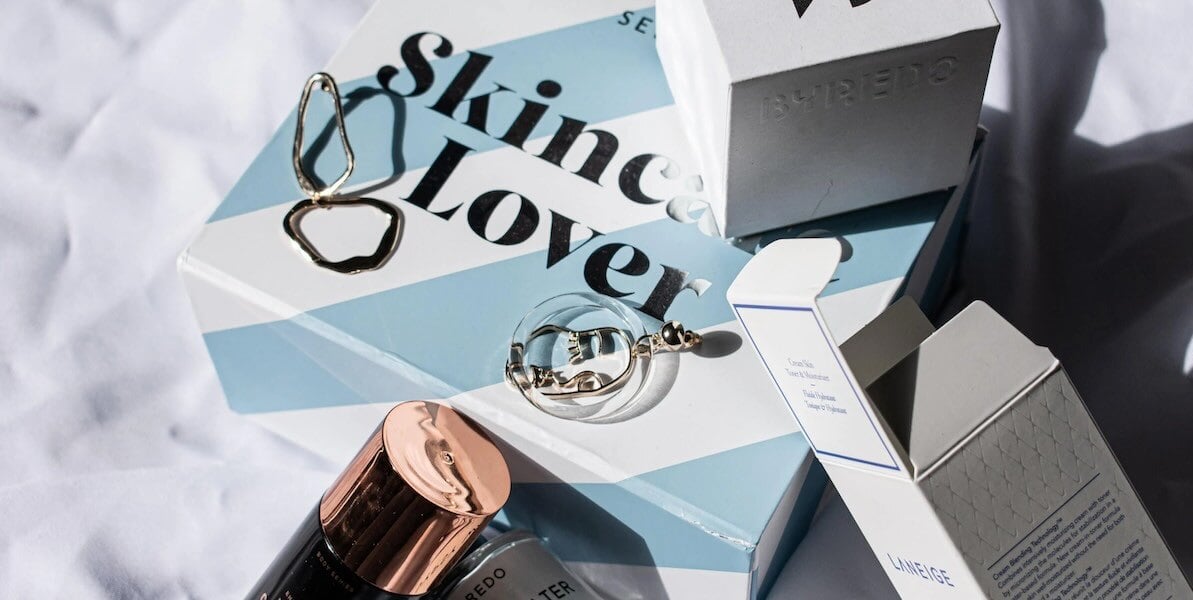

Let's dig into the difference between influencer gifting and paid collaborations?
Both represent ways for brands to get products into the hands of content creators faster.
To kick things off, let’s quickly define both concepts:
Influencer gifting is when brands send products to content creators in exchange for promotional social posts.
Paid collaborations (AKA sponsorships) refer to influencers posting about brands in exchange for free product(s) and financial compensation.
These strategies are similar. But they involve different commitments for brands and creators.
Which approach is “best,” though? Below are the benefits and requirements for brands considering gifting versus paid collaborations.
Skip to Section 👇Influencer Gifting Basics & Best Practices |
No big surprises here! "Gifting" simply means sending free products to creators.
As a brand, your goal is to earn a shout-out from influencers in exchange for products.
You don’t have to look hard to find #gifted products across Instagram and TikTok. Gifting campaigns are big among CPG brands looking to earn reviews and user-generated content.
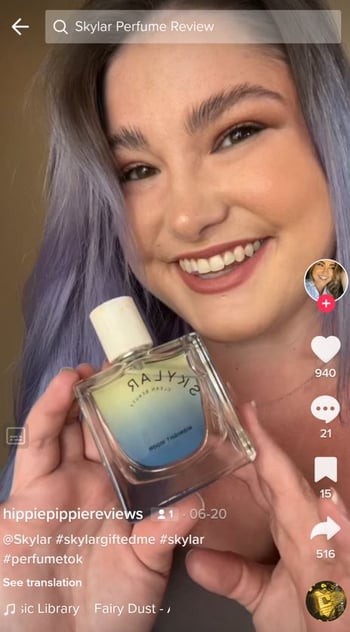
Source: @hippiepippiereviews
Unlike paid collabs, gifting campaigns rarely involve contracts or commitments for creators.
And whether your brand gets a shoutout or review is at the influencer’s discretion.
Here’s a snapshot of the benefits of gifting campaigns for brands and creators alike:
|
Benefits For Brands |
Benefits For Creators |
|
|
The key to making a gifting collaboration work? Sending the right products to the right people.
What do we mean by that, though? Think of working with influencers as a value exchange. If your brand's gift wanted to be viewed as valuable, you need to...

"Value" is in the eye of the beholder. This highlights the importance of finding the right creators.
Again, micro-influencers and small creators know how to authentically promote products. Overly promotional posts are a turn-off to their audiences. That's also why gifting collaborations involve less direction from brands to creators.
Consider that balancing creative freedom with brand requirements is a challenge for 50% of creators. Translation? Brands can’t ask too much of creators for gift-only collaborations.
Now, onto the rules!
The FTC has specific guidelines for gifted products and influencer marketing.
The short of it? Influencers must differentiate between promotional posts and organic posts about products they like. This applies to gifted products with no other form of compensation.
There are a few ways that creators can do this according to the FTC:
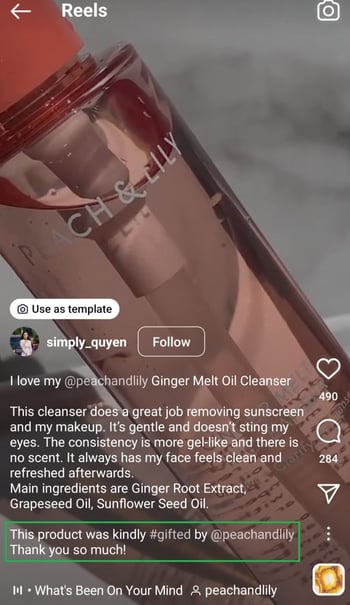
Source: @simply_quyen
The major social platforms pretty much follow the FTC’s lead. Gifted posts fall under the umbrella of “branded content” on Instagram and TikTok.
According to Instagram themselves, brands should “clearly” disclose gifted partnerships. Many creators will outright say they were gifted a product in their post captions. Others might tag the brand and use a #gifted hashtag. TikTok's branded content policy outlines similar rules.
There’s no one-size-fits-all way to disclose gifted collaborations. This is actually good news for brands and creators, though. Gifted posts don’t have to sound rigid or needlessly promotional. If you need more evidence, check out our examples of influencer gifting that highlight how.
The takeaway? Influencers and brands can get creative while still playing by the rules. Many skincare brands have their own branded #gifted hashtags for creators promoting products. Below is an example from Supergoop.
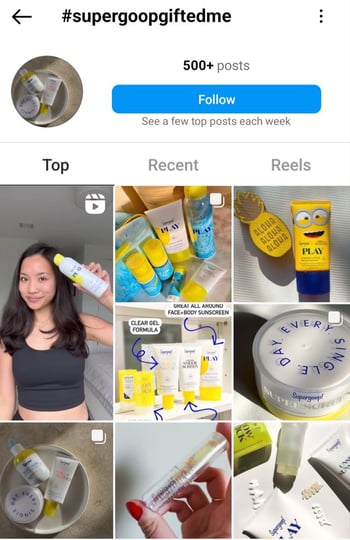
Remember that it’s up to you to establish these requirements with creators. This is why brands should find influencers who already know the rules for promoting products.
Note on Affiliate Links: You might be tempted to provide influencers an affiliate link or promo code along with free product for their followers to take advantage of. Still, you must disclose this sort of partnership as well. Consumers must be aware that although products were given for free – if they make a purchase, the influencer will be making a profit.
Paid collaboration between brands and influencers involves financial compensation beyond free products.
These collabs are popular for brands targeting specific creators with large audiences.
|
Benefits for Brands |
Benefits for Creators |
|
|
Think of paid collab posts like traditional ads. The difference is that influencers can inject some much-needed creativity into their posts. It’s well-documented that creator-based ads perform better on TikTok and Instagram tthan non-creator ads.
Consider that influencer ads themselves can also serve as their own form of paid collaboration even when featuring gifted products. For example, Spark Ads on TikTok are unique as creators can earn payouts for their posts via TikTok Shop or get compensated for their Spark Ad Codes.

Partnership Ads (formerly "Branded Content Ads") are a popular form of paid collaboration on Instagram right now, too. These ads take organic creator content and transform it into promotional content. These posts contain the “paid partnership” label on Instagram (see below).
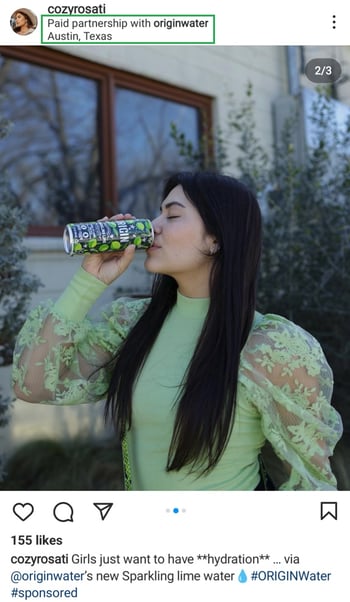
Source: @cozyrosati
Beyond budget, the key difference between gifting and paid collaboration is creative direction.
With most paid collabs, brands call the shots when it comes to what influencers say in a post.
Sponsored content involves a detailed creative brief with explicit instructions and talking points. On the flip side, gifted posts let creators freestyle and share unfiltered thoughts.
Instructions can remove some of the personality from your sponsored content. This again highlights the importance of creative freedom. That said, skilled creators can strike a brilliant balance between personality and promotion.
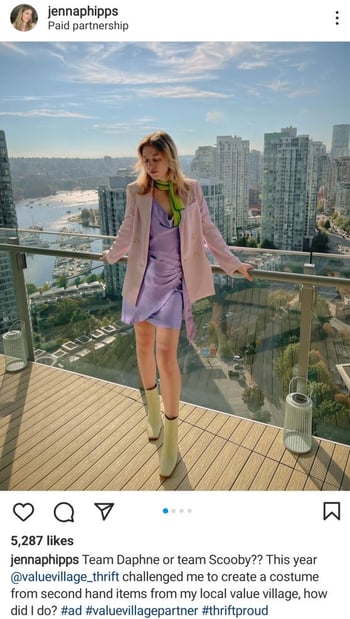
Source: @jennaphipps
The FTC has guidelines for product endorsements and monetary compensation on social media.
Here’s a five-word summary: when in doubt, disclose it.
Again, Instagram and TikTok have similar policies for paid collaborations and influencer gifting. Both are considered “branded content.” For sponsored posts, creators must take steps such as:
Failing to do so isn’t worth the potential backlash and fallout (think: fines and suspensions).
Despite their similarities, note that not all disclosure hashtags are the same. For example, #ad implies that a post’s language and endorsement are approved by a brand prior to posting. Meanwhile, the #gifted tag is more of a general label.
The FTC is crystal clear that disclosures are the responsibility of brands and influencers (hint: not social platforms). On that note, applying a “sponsored” or “paid partnership” label isn’t considered a disclosure by default. According to the FTC:
“Just because a platform offers a feature like that is no guarantee it’s an effective way for influencers to disclose their material connection to a brand.”
And that’s why we still see the #ad disclosure in paid collaboration posts.
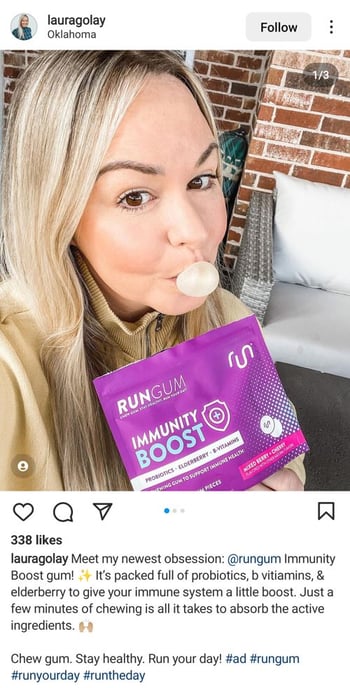
Source: @lauragolay
The short answer? It depends!
Whether you’re sending free products or compensating creators with cash, both strategies are effective at boosting influencer ROI. It's all about creating an equitable value exchange.
The most important piece of the puzzle, though?
Sending your product to relevant influencers at scale.
Brands can't get significant awareness and better social search rankings with just a handful of gifted posts. To maximize your influencer marketing ROI in terms of time and budget, a high volume of content is crucial.
But paying individual influencers for hundreds of posts isn't realistic for brands in-house.
That's where Statusphere can help. Our micro-influencer marketing platform matches brands with creators from our vetted influencer network using 250+ first-party data points. We only match brands with creators that actively want to post about their products.
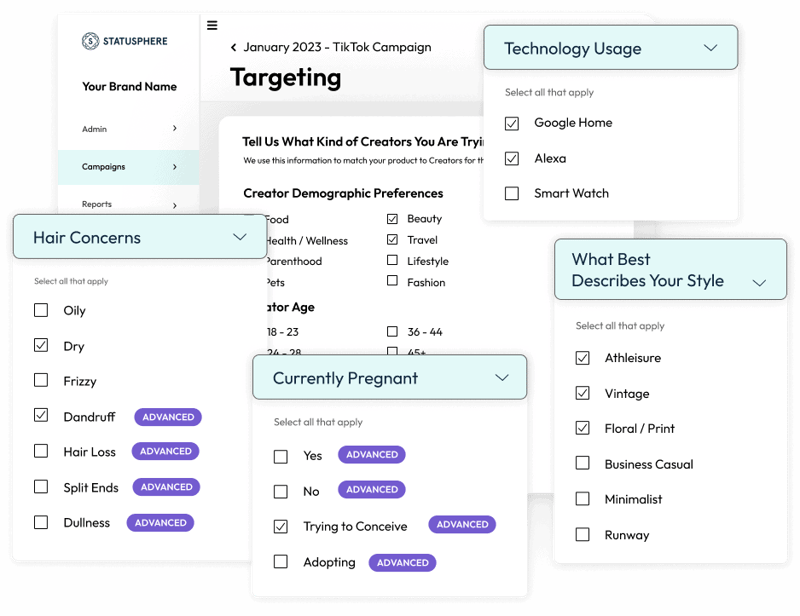
Since you only partner with creators from our network, content is guaranteed and scalable. Our platform has already generated 75,000+ authentic posts on behalf of 400+ consumer brands. We specialize in helping brands scale gifted collabs and paid campaigns with smaller creators.
Want to learn more about our software? Get in touch with one of our experts to see how we can streamline your influencer marketing efforts with guaranteed content at scale.
This article was first published in June 2020. It was last updated September 10, 2024.

Gifted collaborations are when brands send products to influencers at no cost with the expectation that creators will make promotional content (such as reviews or unboxing videos) in exchange for the free (AKA "gifted") products.
It depends!
If a product is sent to a creator without prior outreach or confirmation, there's no way for a creator to officially "accept" the collab.
Otherwise, gifted collaborations can be coordinated between brands and creators via email, DMs or an influencer gifting platform that automates the collab process with pre-negotiated collabs.
According to the FTC, creators should "clearly" disclose whenever a post is sponsored or if they received a free product.
These disclosures can be done in a few ways:
Gifted collabs should reflect authentic thoughts and feedback. Creators should also avoid making misleading claims or exaggerating the benefits of products they receive for free.
Important: disclosures should be included every single time a creator posts about a gifted product.
Learn more about FTC guidelines for gifted products.
Whether spoken, written or used in a hashtag, highlighting that a product is "gifted" is a form of disclosure that's required by the FTC.
By using the word "gifted," influencers are telling their audience upfront that they've been compensated by the brand (either through free products, payments or both).
Beyond legal requirements, gifted disclosures help creators maintain transparency and trust with their followers.
As the FTC updates its rules for influencers, brands have guidelines they must to stick to when gifting products. This post breaks down the rules on...
Influencer gifting campaigns can build awareness and help brands get influencer content at scale. Here’s how to send products to influencers with a...
Getting UGC at scale with influencer gifting doesn't happen by accident. Below we break down how to fine-tune your influencer gifting strategy to see...
Be the first to know about the latest tools, trends and strategies in influencer marketing for brands.